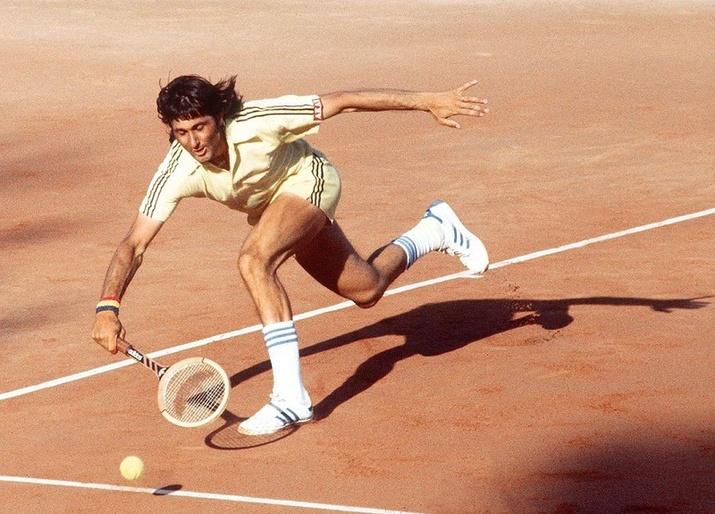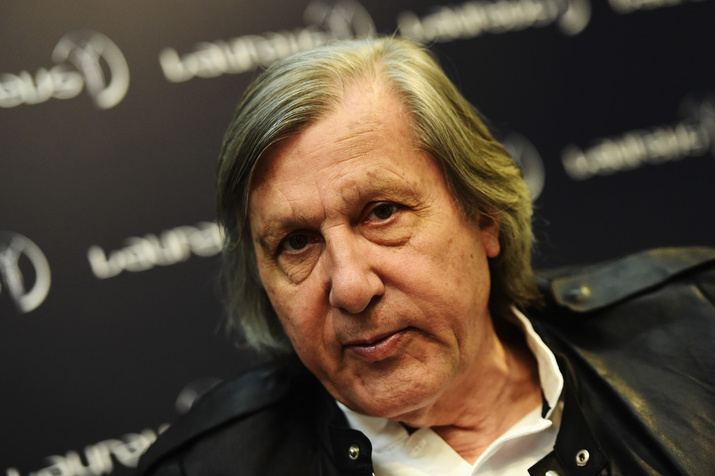Don't miss any stories → Follow Tennis View
FollowLooking Back at Ilie Nastase During Bucharest
This week, an intriguing group of ATP players have emerged in Romania to compete for the BRD Nastase Tiriac Trophy. Gilles Simon and Gael Monfils lead a field looking to capture the title partly named for the greatest men’s player to ever come out of the country. Some only know of Ilie Nastase for his on-court antics, but the legend was a master with the racket as well.
The Bucharest native put together a long career that began in the 1960s and extended into the 1980s. During this period of time, Nastase won two Grand Slam singles titles (Roland Garros and the US Open), was twice runner-up at Wimbledon, and won multiple titles at the year-end championships. He won 58 singles titles during his career and once held the distinction of “World’s Top Player.” His body of work landed him into the International Tennis Hall of Fame in 1991.

To underscore the greatness of Nastase on the tennis court, simply rewind to the year of 1973. Then, 27 years old and in his prime, he was virtually untouchable on clay, where he would amass a 59-3 record on the surface. The magician-on-court would win the French Open that season without dropping a set. In fact, in the 19 sets he played during the tournament, only once would an opponent muster more than four games against him. The title capped a year in which Nastase would earn championships at Monte Carlo, Barcelona, Madrid, and Rome on the clay.
Notable victims during this run included greats such as Jimmy Connors, John Newcombe, Stan Smith, and Bjorn Borg. When the dust settled on 1973, the often fiery competitor had accrued 15 singles championships, winning tournaments on clay, grass, hard court, and carpet. He ended the season by earning the year-end championships title and held the world No. 1 ranking until the following year.
Still regarded as one of the most gifted players of all time, Nastase combined a strong tennis IQ with a variety of shots from his arsenal. He possessed tremendous hands at the net and held an acute sense for applying various spin and speed to shots with uncanny intuition during points.
However, along with his exceptional talent, Nastase often walked a line between exuberant flair and a petulant demeanor on the court. In terms of current player comparisons, the showmanship of Gael Monfils mixed with the temper of Fabio Fognini would likely fall short of the man who was once nicknamed “The Bucharest Buffoon.” And while some argue that the Romanian cost himself several majors by focusing on antics over performance, Nastase embraced the entertainment aspect.
The former top-ranked player often conversed with fans sitting courtside in playful interactions. It was not unusual for him to engage a fan between points, often to the dismay of his opponent. Likewise, he possessed the ability to berate an umpire with a smile on his face. In a 1977 Wimbledon contest against Borg, an unhappy Nastase refused to move back to the deuce court, forcing the Swede to wait. After chair umpire Jeremy Shales addressed him by his last name only, the two-time Grand Slam champion quipped, “You call me Mr. Nastase.” And while the entire incident delayed the match, it brought laughter to the London crowd.
Nastase represented a genre of players who flew against the perceived stuffy, traditional country club atmosphere with which tennis had been labeled. Along with players such as Connors and John McEnroe, he often chose to take a different route by displaying actions far from mannerly. At times abusive towards opponents, umpires, and even courtside photographers, Nastase would earn another nickname, “Nasty.”
This manner would cost him on more than one occasion. Ironically, facing fellow “bad boy” McEnroe in the 1979 U. S. Open, a past-his-prime Nastase would engage in a volley of insults towards his opponent and lashed out at the chair umpire. The up-and-coming teenager would not back down, returning the favor, and chaos ensued. With the New York crowd becoming ever more restless, Chair Umpire Frank Hammond had no choice but to strictly enforce the code of conduct during the match. Eventually, Nastase refused to serve, and after being placed on the clock, the match was defaulted in favor of McEnroe.
A similar incident occurred two years later in Toronto against the American as Nastase used obscene gestures, resulting in five warnings. After he refused to adhere to chair umpire rulings, the match was given to McEnroe once more. Ironically, by many accounts, most opponents enjoyed the company of Nastase away from the court. Many were drawn by his happy-go-lucky sense of humor and playful personality. However, there were numerous encounters when these same touring professionals did not share that same sentiment while on the court.

Unfortunately, many only remember Nastase for his actions aside from his stellar play. Tremendous battles such as the 1972 five-set Wimbledon final against Stan Smith, his 1972 U. S. Open championship versus Arthur Ashe, and his 1975 year-end Masters championship against Borg in Sweden are sometimes overlooked.
Now 68 years old and hoping to give back to his beloved country while developing young and rising players, Nastase spends a lot of time at his tennis academy in Bucharest. The country currently boasts one of the top WTA players in Simona Halep, but has not produced a major men’s champion since his retirement. And as a solid draw competes in Bucharest in hopes of hoisting the trophy that bears his and fellow Romanian Ion Tiriac’s name, the legacy of Ilie Nastase lives on.










